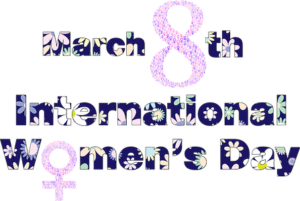 By Melissa J. Anderson (New York City)
By Melissa J. Anderson (New York City)
Recognizing the impact role models can have on professional development is critical to the advancement of women in law. And Last week, the Financial Women’s Association of New York and the New York County Law Association held an event honoring trailblazing women in the profession, who shared their wisdom on breaking barriers, managing office politics, handling work and life responsibilities, and more.
The panel was moderated by Susan L. Harper, Esq., Baritz & Colman, LLP, General Counsel, FWA of New York, Inc. & Co-Chair, NYCLA’s Women’s Rights Committee, and featured Judith S. Kaye, Chief Judge of the New York Court of Appeals (1993-2008), now Of Counsel with Skadden, Arps, Slate, Meagher & Flom; Susan L. Blount, Senior Vice President and General Counsel, Law, Compliance, and Business Ethics, Prudential Financial, Inc.; Sheila K. Davidson, Executive Vice President, Chief Legal Officer and General Counsel, The New York Life Insurance Co.; and Susan Merrill, former head of enforcement at the Financial Industry Regulatory Authority (FINRA), New York Stock Exchange, now Partner, Bingham McCutchen.
One of the most interesting aspects about the evening (besides the insightful and often humorous remarks by the panelists) is that the event was worth continuing legal education (CLE) credits – a nod to the importance of sharing career wisdom and motivation.
Harper said, “It is extremely important that our executive level bar leaders participate in professional development programs. It sends a very strong message to developing attorneys and business people when New York’s former Chief Judge, a sitting GC of a Fortune 500 company, a sitting GC of a Fortune 100 company and the former head of enforcement for our nation’s largest financial regulatory organization agree to come together to share how attendees can break through the glass ceiling.”
She continued, “The information and wisdom that these leaders imparted is critical in educating and advancing the future leaders of our profession. I applaud our panelists for being so candid in their remarks and recommendations. Women and men need to know that such success is attainable and it may be as simple as leaders providing the knowledge and the inspiration, as this program did.”
 By Melissa J. Anderson (New York City)
By Melissa J. Anderson (New York City)
 By Vanessa Hall “The Trust Lady” and author of
By Vanessa Hall “The Trust Lady” and author of  By Melissa J. Anderson (New York City)
By Melissa J. Anderson (New York City) By Melissa J. Anderson (New York City)
By Melissa J. Anderson (New York City) By Elizabeth Harrin (London)
By Elizabeth Harrin (London) By Nicki Gilmour, Founder and CEO of The Glass Hammer
By Nicki Gilmour, Founder and CEO of The Glass Hammer
 By Melissa J. Anderson (New York City)
By Melissa J. Anderson (New York City) By Melissa J. Anderson (New York City)
By Melissa J. Anderson (New York City) By Tina Vasquez (Los Angeles)
By Tina Vasquez (Los Angeles)